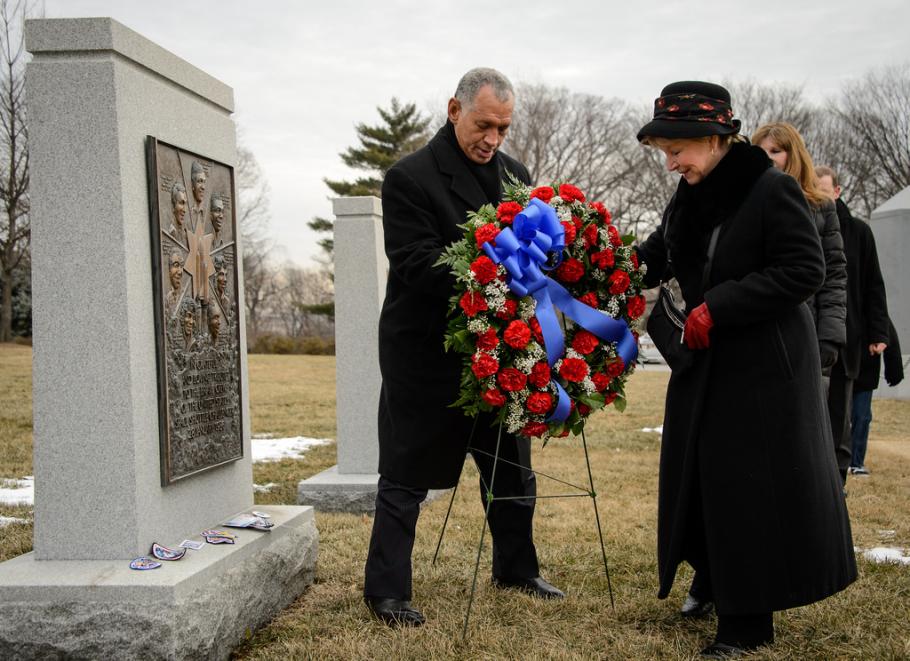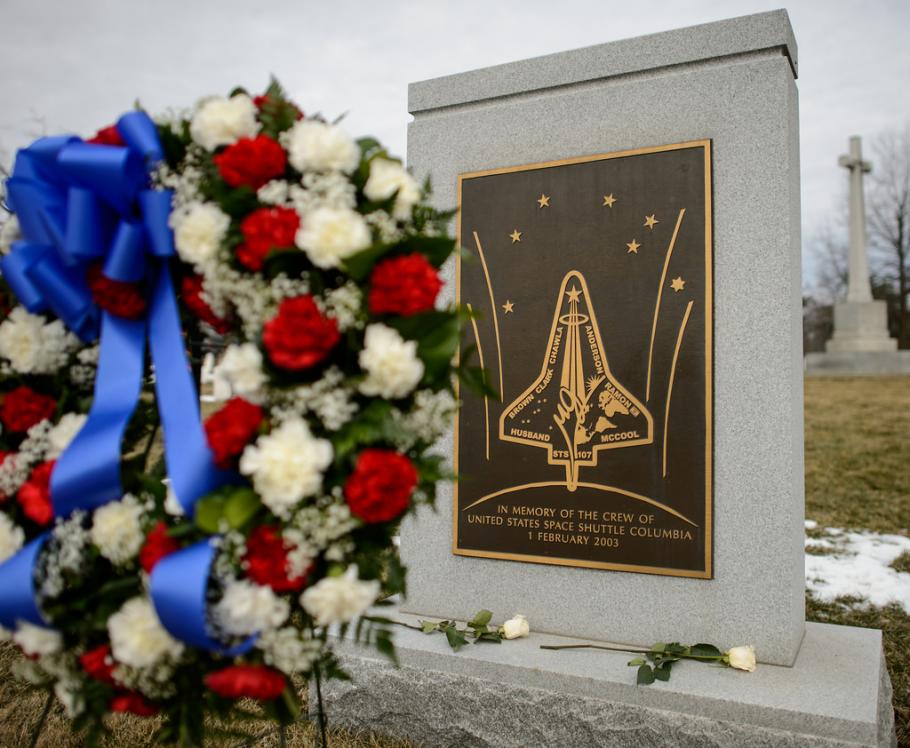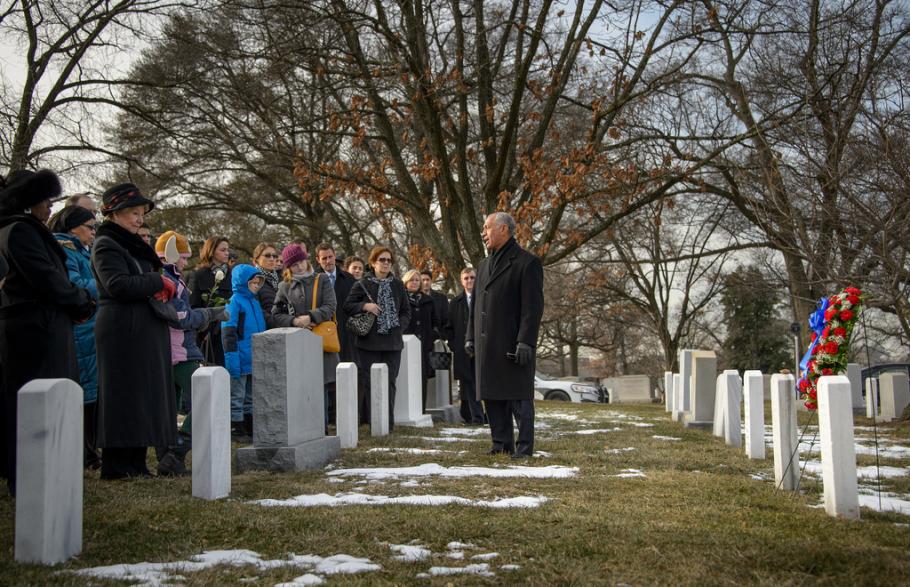Like Janus, the two-faced god of transitions in Roman mythology, the human spaceflight community looks to the past and future as January turns to February. In 2004, NASA instituted a Day of Remembrance for three crews lost in horrific accidents. Work pauses briefly at all NASA Centers on January 31 for a ceremonial tribute and rededication to safety in spaceflight. This time, NASA held a prelude to the Day of Remembrance at the National Air and Space Museum. On January 30, the eight members of the Astronaut Class of 2013, still candidates in training, met with students here and engaged in a twenty-minute video-linked conversation with the U.S. crew members currently on duty on the International Space Station – Rick Mastracchio and Mike Hopkins.
Astronaut candidates and Americans on the International Space Station field questions from students and visitors at in the Museum’s Moving Beyond Earth gallery.
In answer to questions about how they decided to become astronauts, several answered that they were inspired by previous astronauts. As children, they saw people doing what had not been done before, and they wanted to participate in the challenges and adventures of space exploration. They are excited about the future and their prospects for travel on new spacecraft to the space station or beyond. Yesterday, the same eight astronaut candidates made their first trip as a group to Arlington National Cemetery, to visit the gravesites and monuments that memorialize the Apollo 1, Challenger, and Columbia crews. Other astronauts, NASA staffers, and members of the fallen astronauts’ families gathered as they do each year to witness the laying of wreaths and remarks by the NASA Administrator. It went unspoken that this is the other side of the Janus face. With adventure comes risk. “The future doesn’t belong to the fainthearted; it belongs to the brave,” President Reagan reminded the nation after the 1986 Challenger tragedy, and sometimes terrible things happen. It has been 47 years since three astronauts died in a fire while training for the first Apollo mission, 28 years since the STS-51L Challenger crew lost their lives during launch, and 11 years since Columbia’s STS-107 crew lost their lives on the way home. To those who knew them, it seems like yesterday, and the memories will forever cause pangs of sorrow.
NASA Administrator Charlie Bolden and Dr. June Scobee Rodgers, widow of Challenger’s last commander, place a wreath at the Challenger crew memorial in Arlington National Cemetery on January 31, 2014.
Administrator Bolden placed a similar wreath at the nearby Columbia crew memorial.
Administrator Bolden makes final remarks to the “NASA family” at the gravesites of Apollo 1 astronauts Virgil “Gus” Grissom and Roger Chaffee. Ed White is buried at West Point.
Yet the journey into space continues to pull humanity into the future. NASA Administrator Charlie Bolden remarked yesterday morning at Arlington that he has no doubt that lives will be lost again, or that once again NASA will learn from the experience and carry on, because that is the mission and that is their legacy: “They are with us still on this grand journey.” Those who perished, those who returned from space safely, those who are now in space, and those yet to go assume the risk and commit to the mission on behalf of our exploring nation, and by proxy the people of the world. It is a noble calling. The Day of Remembrance is a sober reminder to look back even as we look forward—to remember and learn from the past to ensure success in the future. That is a good reminder for all of us, no matter what we do, but it is an especially prudent reminder for those who send precious people into space, and those who aspire to go.




